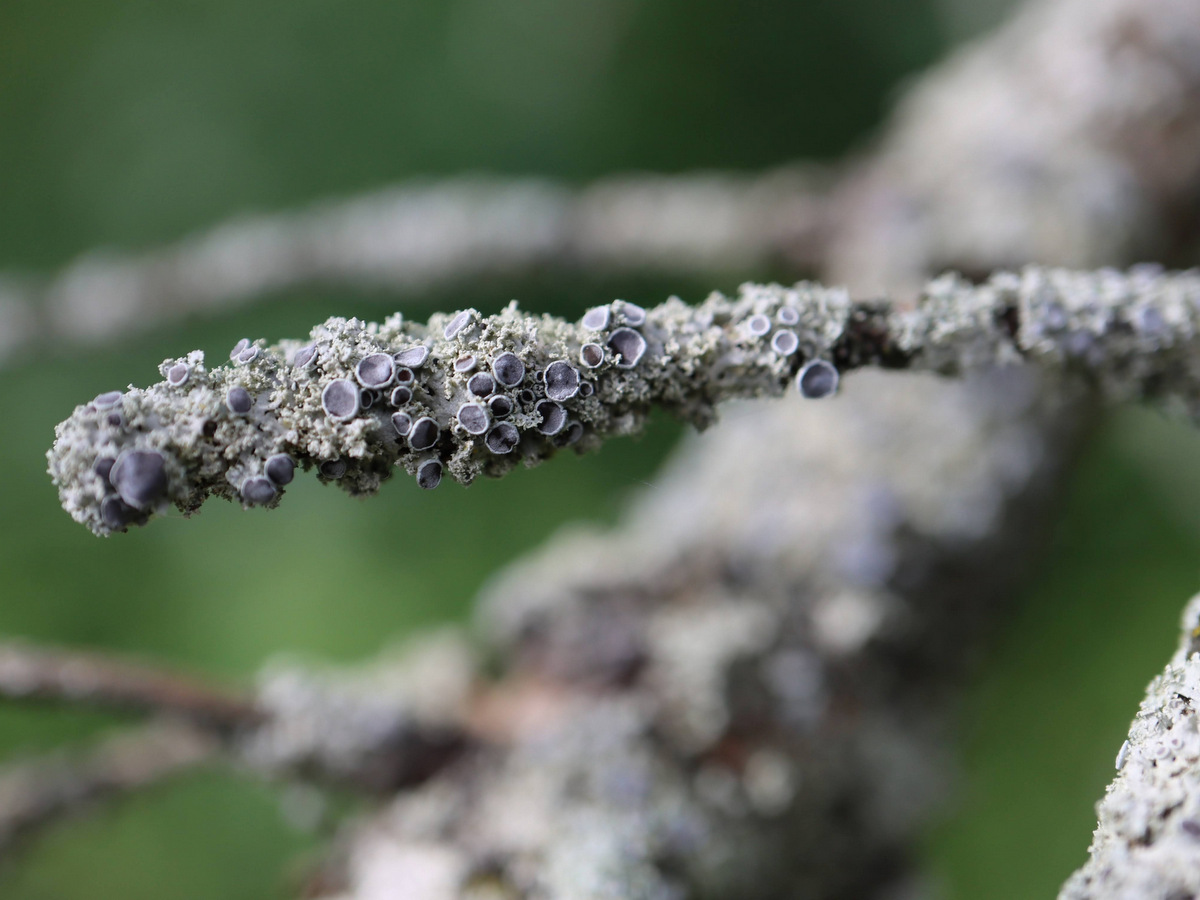The transition from lush green summer to crisp colorful autumn is upon us, with winter looming not far behind. For insect-lovers, birders, and foliage fans, this shift might seem sad, the resulting landscape dull and lifeless.
But the opening of the canopy and absence of other diversions also provide an opportunity to look closer and discover something wonderful. All around us, on exposed tree bark, rocks, and bare ground, lie galleries of richly varied color and form. This is the world of lichens, which the Chinese aptly call 地衣 (pronounced dìyī)–literally, “earth clothing.”
A lichen is not a single organism, but rather a mutualistic partnership of one fungus and at least one photobiont (green algae or cyanobacteria, or sometimes both), all living together in one body. The fungus provides a stable scaffold and protection from the elements and predators, while the photobionts produce sugars via photosynthesis, to sustain both themselves and the fungus. Lichens also commonly contain bacteria, tardigrades, worms, yeasts, and other microbes. In these cases, the lichen is not just a pairing or a partnership, but indeed a complex ecosystem unto itself.

Mealy Rosette Lichen (Physcia millegrana) with apothecia. Photo: Mark Chao
The body (thallus) of a lichen has several layers. The outer layer is made of fungal threads (hyphae) packed densely together. Individual cells of the algae and/or cyanobacteria lie immediately below, held in place by a looser array of hyphae, which harvest the sugars that the photobionts produce. The bottom surface layer attaches to the substrate, most commonly by tiny root-like projections called rhizines, or sometimes by a single anchor called an umbilicus, for its resemblance to a human navel.
There are at least 18,000 species of lichens known in the world, and at least 3,600 in North America, probably with many more yet to be discovered. Lichens take various forms–as a crust growing directly on the substrate (“crustose”), as leaf-like lobes with different-colored upper and lower surfaces (“foliose”), and as shrub-like growths of branches or clubs growing out in three dimensions (“fruticose”), among others. They come in a full spectrum of colors, from subtle to spectacular–gray, green, bluish, yellow, orange, red, brown, black, and all shades in between. Their colors arise from specialized chemical compounds, many of which are unique to lichens.
Lichens reproduce vegetatively, most commonly when a piece of the thallus breaks off, then reattaches and grows in a new location. They can also vegetatively propagate by releasing little packets of hyphae wrapped around photobiont cells, through openings in the upper layer of the thallus. In both of these vegetative reproductive modes, the new lichens are genetic clones of the original. Lichens can also reproduce sexually, with a given fungus releasing spores into the environment, where, with luck, they will land upon a compatible fungus. This, in turn, may lead to the formation of fruiting bodies (often, cup-shaped structures called apothecia) that produce and release a new round of spores with DNA from both parent fungi. To survive and grow, the new fungus needs suitable algae and/or cyanobacteria to be present in the new location, as the fungi of lichen species cannot survive without a photobiont.
Once established, lichens can live for decades or even centuries. Their distinctive way of life enables them to thrive in almost all terrestrial habitats, including otherwise barren Arctic rock landscapes, alpine cliffs, and deserts, as well as forests and open country of the Finger Lakes. The main threat to lichens is air pollution, as they derive most of their water and chemical nutrients from continual exposure to the air, not via uptake from their substrates. Sulfur dioxide and other acid precursors are especially dangerous to lichens. Fortunately, lichen populations do tend to recover well if air quality improves.
Maybe some of you, like me, have spent much of a lifetime enjoying nature but somehow overlooking the lichens around us. But once you start paying attention, you will probably start noticing the beauty and dazzling diversity of lichens wherever you explore, no matter the habitat or the season. And lichens are not only a distinctive pleasure to see, but also a marvel to contemplate and understand–a single living thing, but also many in one, clothing the earth and providing food and shelter all at once, everything that a fungus and its microscopic partners would need for a life of blissful sedentary coexistence.

